3D Printing Materials
Fathom offers a wide variety of materials for additive manufacturing. Selecting the best medium for your unique part is critical to producing a viable product. Fathom offers several additive manufacturing technologies with a diverse range of material options. Our experienced engineering staff can help you select the right additive technology and material combination that will best meet your requirements.
PolyJet Materials
PolyJet is one of the most versatile additive manufacturing technologies available today. It enables the production of highly accurate parts with different durometers, from rigid to rubber-like consistencies, multi-color, transparent and translucent materials – all in a single build. It also enables several materials to be printed simultaneously, simulating overmolding. It can also be used to build work holding jigs, forms and end-of-arm tooling where tight tolerances are a must. Learn more about PolyJet here.
Materials // PolyJet 3D Printers use photopolymers that can simulate different material properties ranging from rubber to rigid and transparent to opaque. Some materials are very hard and are heat resistant. Others have the feel of a rubber or elastomeric material that can flex, bend and act as a seal.
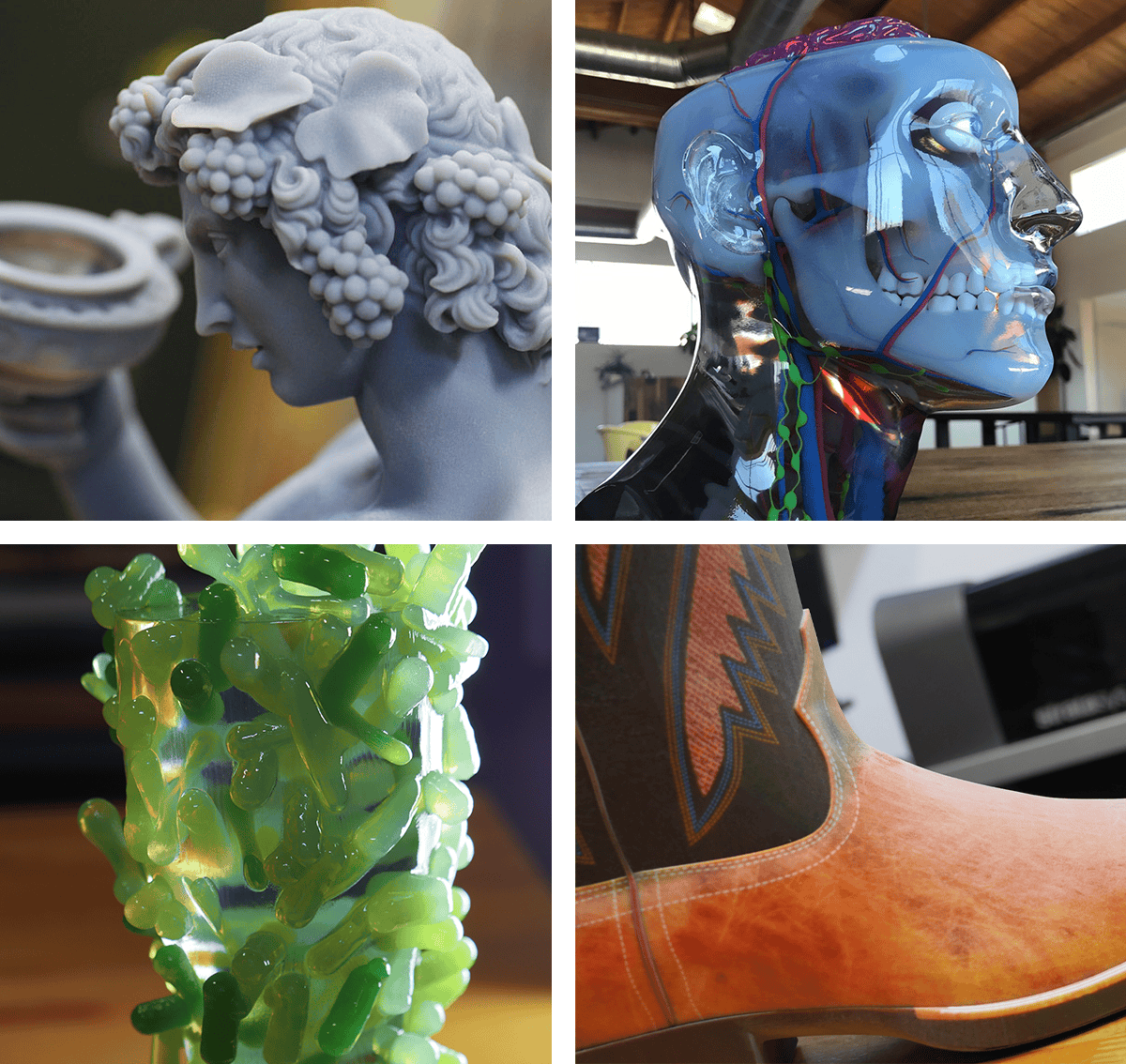
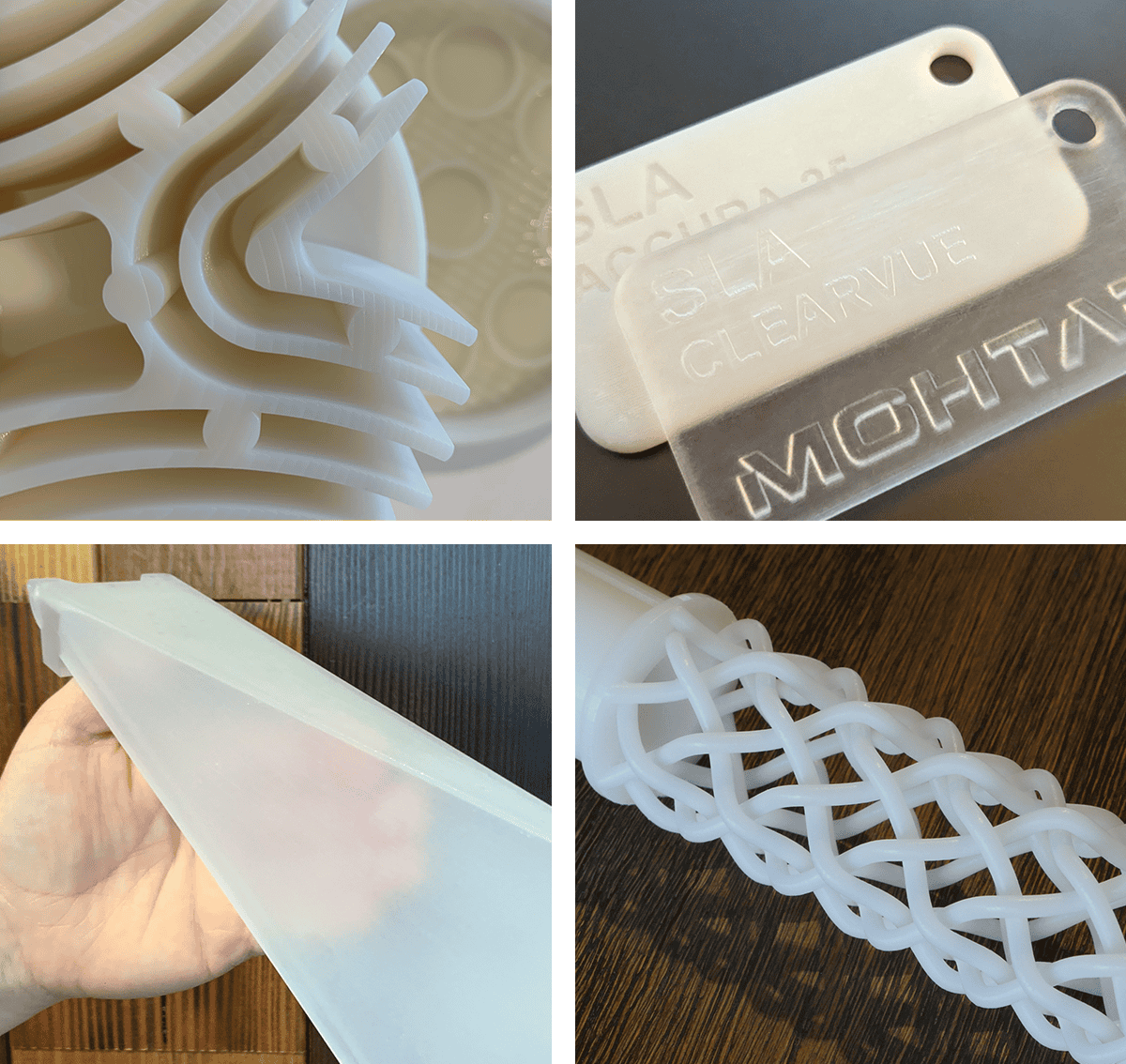
Stereolithography Materials
Since its introduction in the 1980s, Stereolithography (SLA) has become one of the world’s most popular and widespread 3D printing methods. Designers rely on stereolithography as a tool to help refine and validate ideas by creating affordable, high-quality physical models. SLA resins are available with extremely high heat deflection. These materials are an excellent choice for building molds or inserts. Learn more about SLA here.
Materials // SLA uses thermoset photopolymers that can be cured using UV light. Clear 3D-printed SLA resins can achieve colorless clarity with additional post-processing to mimic clear plastics.
Fused Deposition Modeling Materials
Fused Deposition Modeling (FDM) technology is ideal for building concept models, functional prototypes, and end-use parts using standard, engineering-grade and high-performance thermoplastics. The FDM process uses the same types of raw materials used in the injection molding process. This gives FDM a distinct advantage over other additive manufacturing technologies by allowing designers and engineers the chance to evaluate parts with similar physical characteristics before going into mass production. Learn more about FDM here.
Materials // FDM can print parts using a variety of high-performance engineering thermoplastics, including ABS, polycarbonate (PC) and Ultem. Material options include specialized properties like electrostatic dissipation, translucence, biocompatibility, VO flammability and FST ratings.
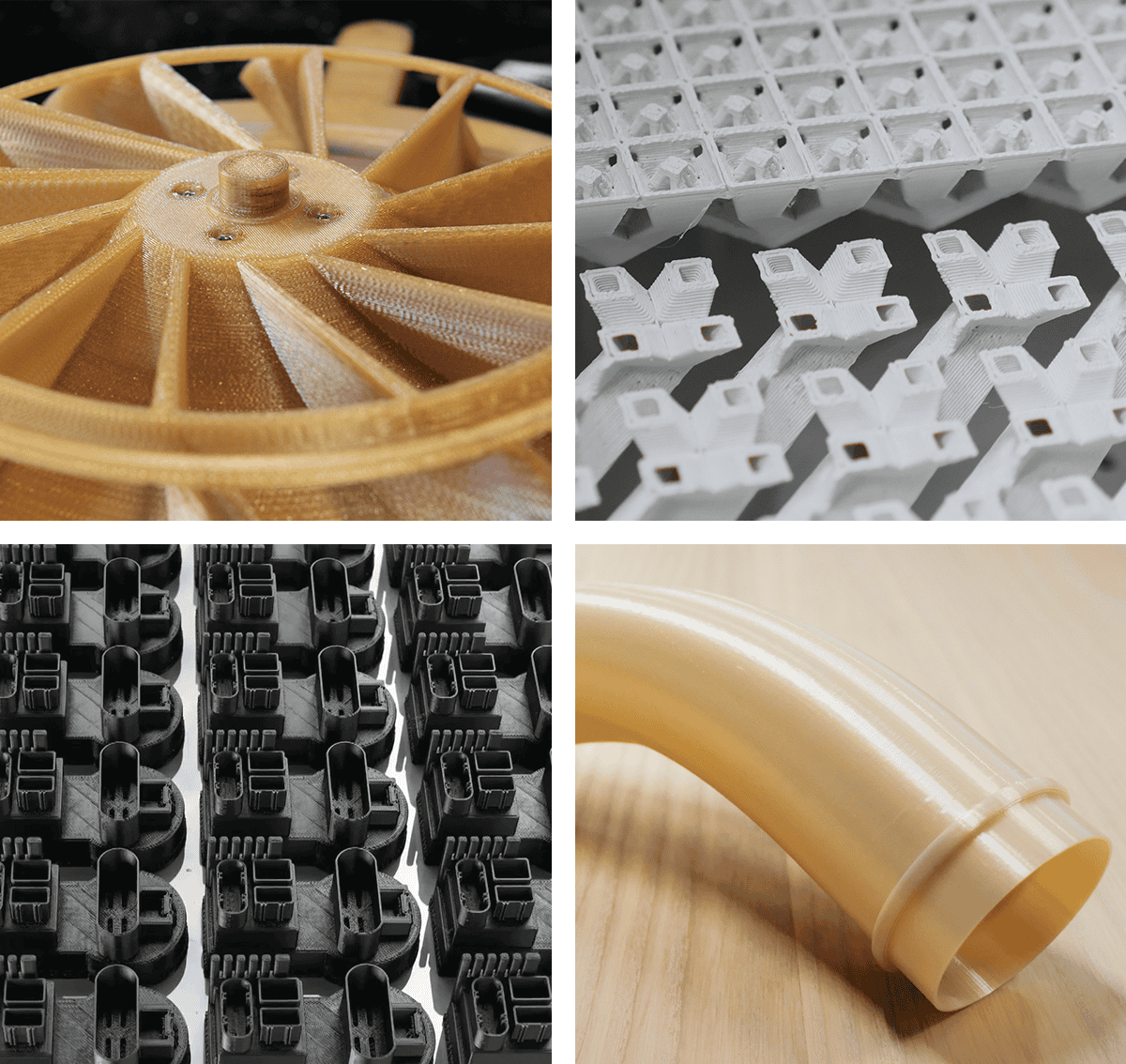
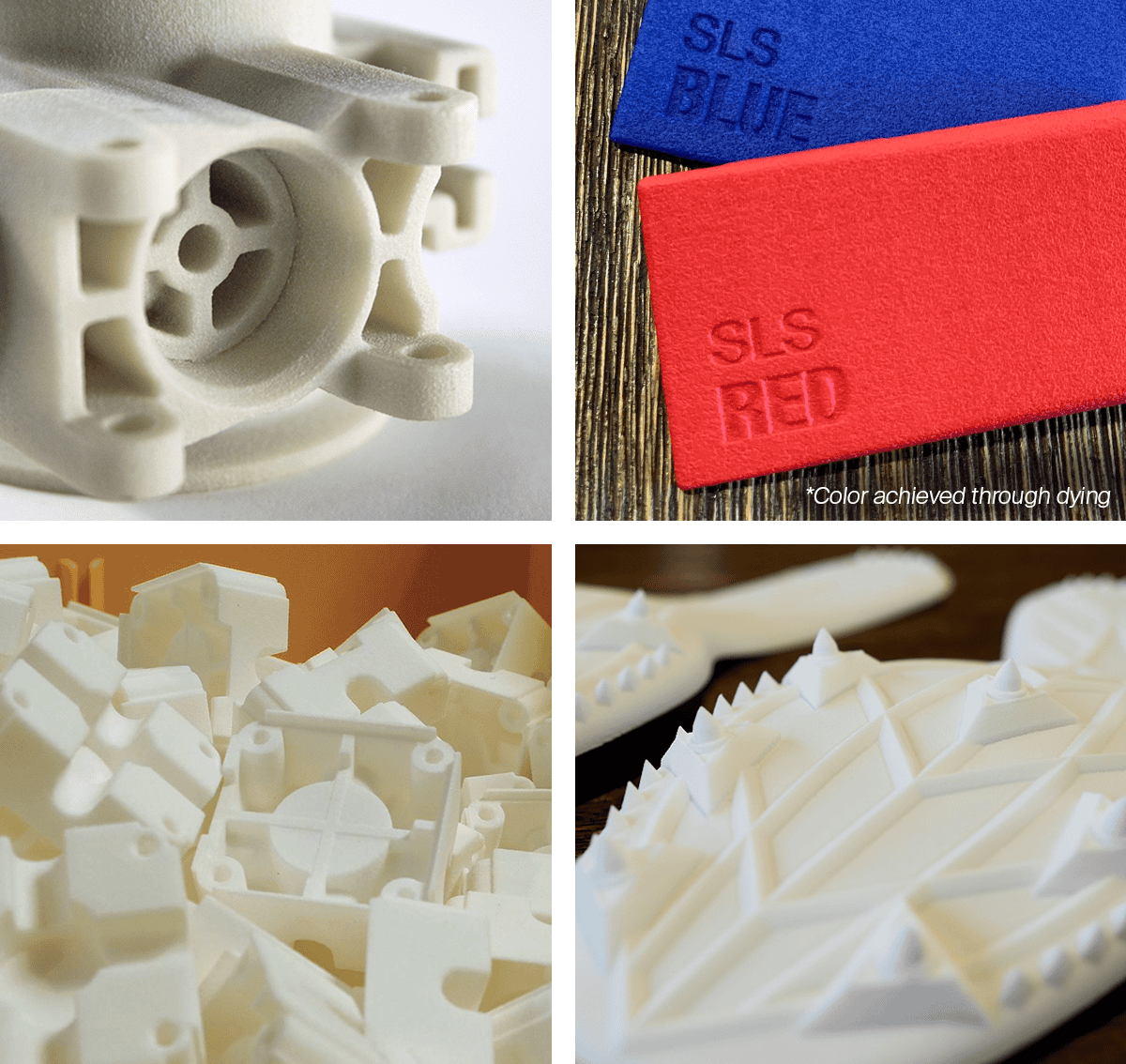
Selective Laser Sintering Materials
Selective Laser Sintering (SLS) technology is a powder-based additive technology used to create models, prototypes and end-use parts in durable, engineering-grade thermoplastics. SLS can produce parts with finer details than most other additive processes that use high-strength plastics. The composition is one of the more isotropic available from additive manufacturing. Learn more about SLS here.
Materials // Common materials for the production of SLS parts include nylon, glass-filled nylon and polyurethane. Fathom offers a wide range of machine sizes and capacities to meet all your SLS production needs.
Multi Jet Fusion Materials
Multi Jet Fusion (MJF) technology is quickly becoming a popular choice for 3D printing prototypes and production parts. It’s ideal for short production runs because the process allows for the nesting of parts in the Z-direction. MJF is capable of 3D printing parts with high detail and durability. Learn more about MJF here.
Materials // Nylon 11 and 12 are available for use with MJF printers. Nylon 12 will produce smooth surfaces and fine details. It provides excellent chemical resistance to oils, greases, aliphatic hydrocarbons and alkalis.
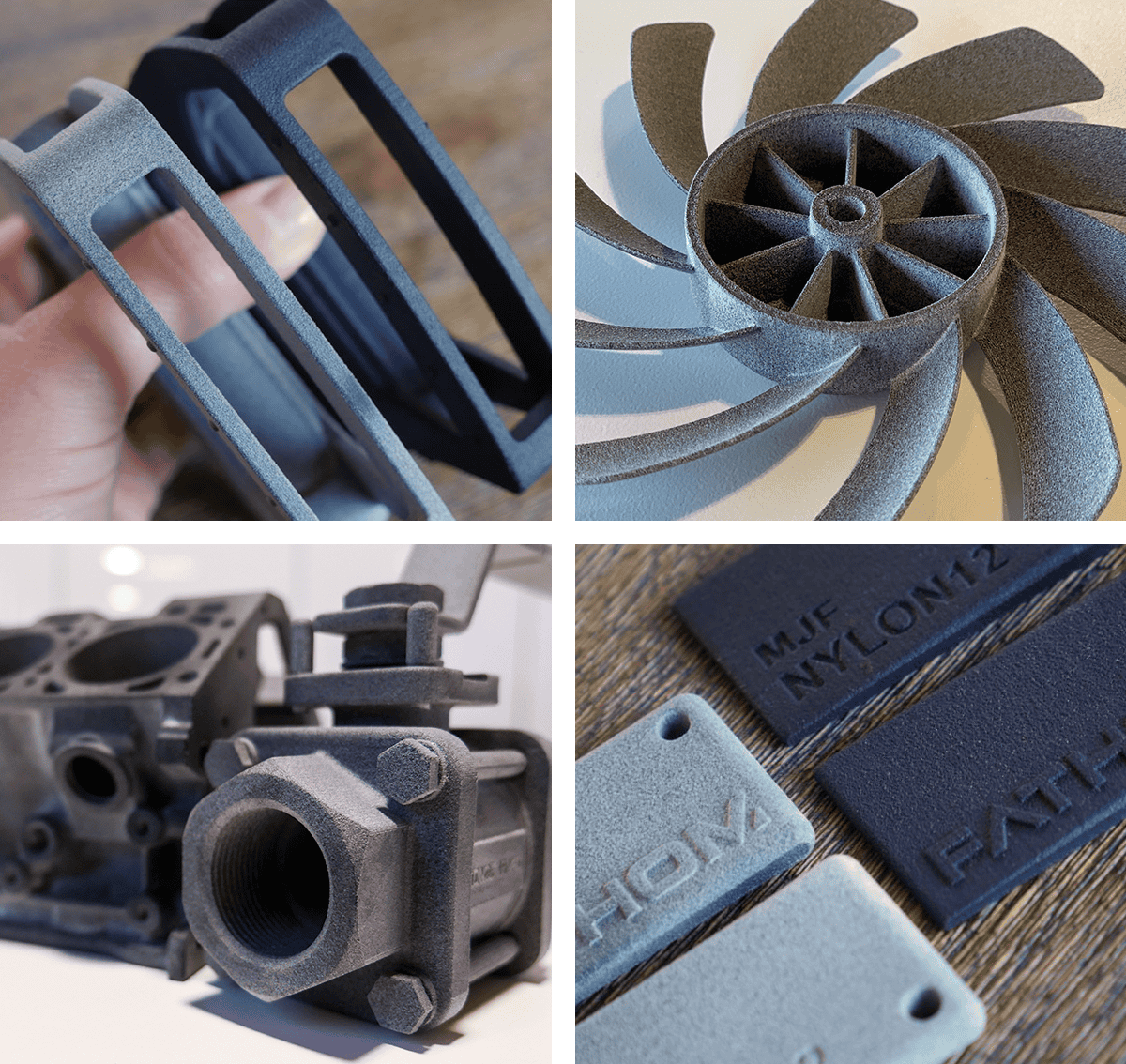
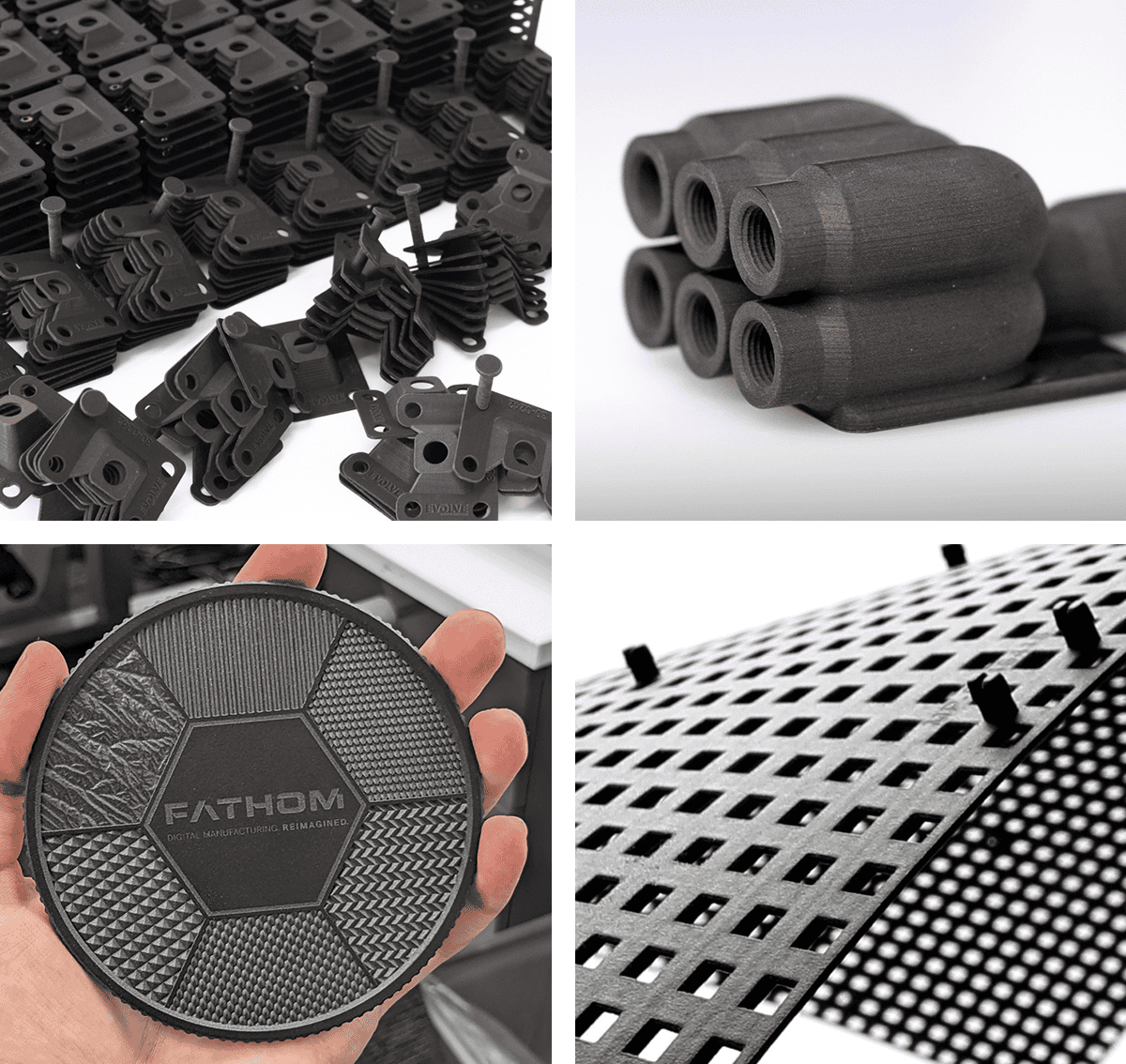
Selective Thermoplastic Electrophotographic Process Materials
STEP is a new technology available exclusively from Fathom that produces 3D-printed parts at injection molding speed. Proprietary technology ensures that each layer is perfectly aligned with the one below it. The STEP technology produces layers that are only 13 microns thick, ensuring 100 percent dense, highly detailed parts that equal the quality of injection-molded parts – without the need for expensive tooling. Learn more about STEP here.
Materials // Currently, STEP parts can be produced in ABS (black and gray). Nylon G850 is coming soon.
Direct Metal Laser Sintering Materials
Direct Metal Laser Sintering (DMLS) is a metal additive manufacturing technology that enables designers and engineers to streamline their manufacturing processes with precision metal prototypes and low-volume metal production parts. These types of parts would be impractical or cost-prohibitive to machine in a conventional manner. Learn more about DMLS here.
Materials // Common materials used to produce DMLS parts include aluminum, maraging steel, stainless steel and titanium.
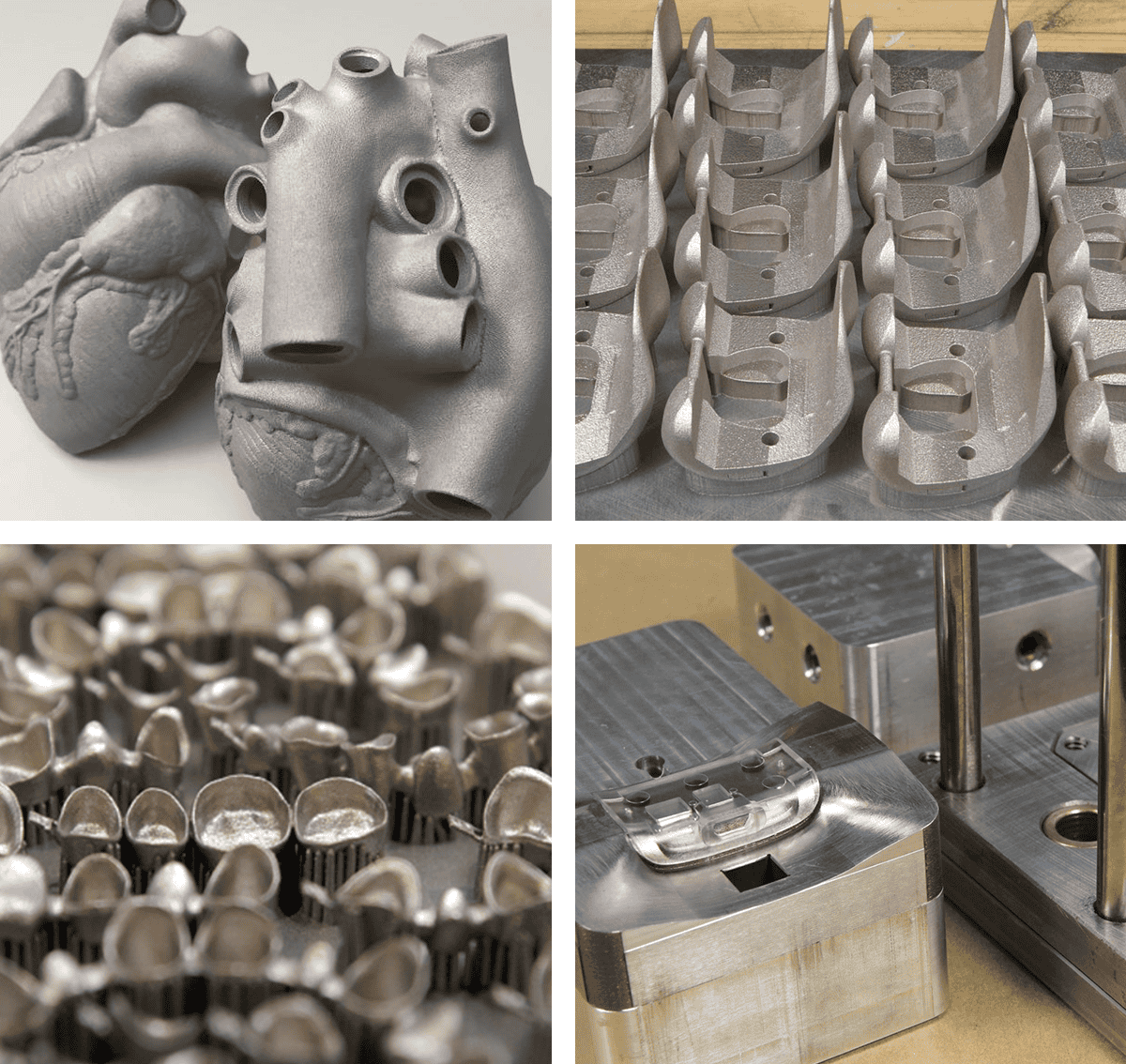
3D Printing
Material Finishing
Parts made using additive manufacturing can have the same look, feel, and finish as a product made with traditional manufacturing processes. Any finishing that may be required depends on the kind of additive manufacturing method used. Finishing may include these options listed here.
Visit our Additive Post Processing page for more information.
Support Removal // This may be done with a water jet, removing the support by hand, a chemical bath, or digging. Support removal varies by the technology used.
Bonding // Bonding may include solvent bonding, super gluing, epoxies, hot air welding, or ultrasonic spot welding. Bonding is necessary when a part is printed in small pieces that must be assembled to form a larger product.
Mass Finishing // The parts are placed inside a tub filled with sanding/polishing media. The parts are tumbled inside the tub and the movement works to remove imperfections from the surface of the part. This method is not suitable for objects with delicate features. Mass finishing may be used if sanding by hand is deemed too time consuming.
Bead Blasting // Plastic or glass beads are sprayed over a part using a blaster gun, giving the part a uniform matte finish. This is particularly useful for parts made using Selective Laser Sintering as it removes any loose powder that may be stuck to the surface. Bead blasting prepares the part for painting.
Electroplating // The part is immersed in a solution of water and metal salts and an electrical current is passed through it. This allows metal cations to form around the part. Several layers may be applied to attain the desired thickness. Electroplating increases the strength of the part by adding an exoskeleton. The electroplating process may be used to give an object the look of a higher quality material.
Sanding // The part may need to be sanded by hand or mechanically once the support has been removed. Sanding is necessary if there are any traces of the support structures.
Infiltration // Infiltration uses an epoxy resin that is brushed onto the surface of the part. The resin sinks into the pores within the material. The part is then cured inside an oven. Infiltration adds strength, water tightness, and chemical resistance to an object. This process may be used if a 3D printed part is fragile.
Painting // Parts may be dyed or painted. Some parts may be sprayed with a specialty paint that gives the object a different texture. Painting is necessary when a designer would like to change the color or texture of a part.
Get a 3D Printing Quote
Start your 3D printing project today with our SmartQuote platform.
